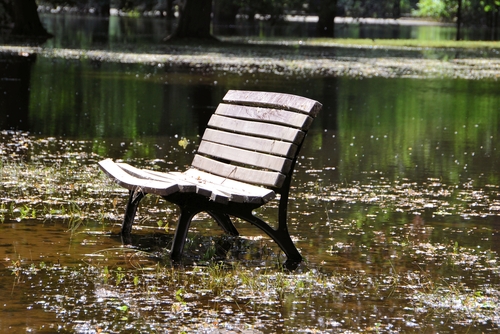Before the Flood: UST Prep Tips
 |
One of the greatest natural threats affecting the United States is flooding that can result from a variety of events—from heavy rain to earthquakes and tsunamis to hurricanes. Floods can also result from man-made events like dam and levee breaches and poor stormwater management. Knowing what can happen and how to prepare for different scenarios can mean the difference between cleaning up after a flood and cleaning up after environmental damage is caused by a release of hazardous waste, oil, or other UST contents.
According to the U.S. Environmental Protection Agency (EPA), there are four main ways a UST can be impacted by flooding:
- Buoyancy: When surrounded by floodwaters or situated in saturated soils, a UST can become buoyant. When this happens, buoyancy forces can “offset the restraint of backfill, pavement, or hold-down straps, causing the tank to shift in the backfill from its location.” USTs that are not anchored may be lifted from the ground and float, resulting in a rupture or separation of the connecting pipes and releases to the environment.
- Erosion and scour: Flooding events that involve rapidly moving water can result in erosion of the soil above or around a UST and scour that can strip away soil covers and supporting backfill around a UST system. In either case, a UST can become exposed to floodwaters and float away or be carried away by fast-moving waters and wind. In addition, an exposed UST system will be subject to stressors from floodwater pressure or floating debris, increasing vulnerability and further compromising the integrity of the UST and the system. For example, underground piping impacted by erosion or scour can shift and become detached from the system, resulting in a release.
- Product displacement: When a UST system is damaged in a flood, water and debris can enter the UST through openings such as fill pipes, vent pipes, gaskets, loose fittings, covers, sumps, and damaged tank walls. When water and debris settle on the bottom of the UST, the contents of the UST will be displaced, rise to the top, and eventually exit the tank through openings into the environment.
- Electrical system damage: Over time, contact with floodwaters can cause damage to a variety of electrical equipment associated with UST systems, including automatic tank gauging systems, panel boxes, emergency shutoff switches, submersible turbine pumps, dispensers, motors, cathodic protection, etc.
Join us for our Underground Storage Tanks webinar December 18 and learn how existing federal requirements and regulations governing USTs could change. Learn more.
To prepare for flooding, the EPA recommends following industry installation standards such as Recommended Practice 100 from the Petroleum Equipment Institute (PEI) and Recommended Practice 1615 from the American Petroleum Institute (API). USTs located near water or in flood zones are especially vulnerable, so operators can do the following to protect the systems:
- Bury USTs deeper and/or increase the amount of backfill/pavement to anchor the system. Always follow manufacturers’ recommendations for maximum burial depths;
- Anchor USTs using deadman anchors with hold-down straps or a concrete collar to add extra weight. Owners/operators should consult a professional who is familiar with local soil conditions when designing anchors;
- Equip fuel lines below the flood elevation level with automatic shutoff valves; and
- Add an extension to the vent pipe if the UST may be submerged in deep floodwaters.
Underground Storage Tanks: How Proposed Regulations for 2015 Will Likely Impact Your Facility
Your UST compliance-based initiatives may need to change in light of anticipated EPA final regulations. Seats fill fast, so Register Now.
When a flood event is imminent, the EPA recommends taking the following steps to minimize water entering the system and displacement of contents:
- Record product inventory and water level readings of all USTs to help account for possible product loss;
- Turn off all electricity to the UST system;
- Fill the tank to weigh it down;
- Secure all openings on top of the tank, and ensure fill caps are in good condition, fastened securely, and locked;
- Make sure the seal on spill bucket plungers are operational;
- Close the shear valve on pressurized piping;
- Temporarily cap off vent pipes; and
- Place a Dumpster, sandbags, or large containers of sand or rock over the tank.
